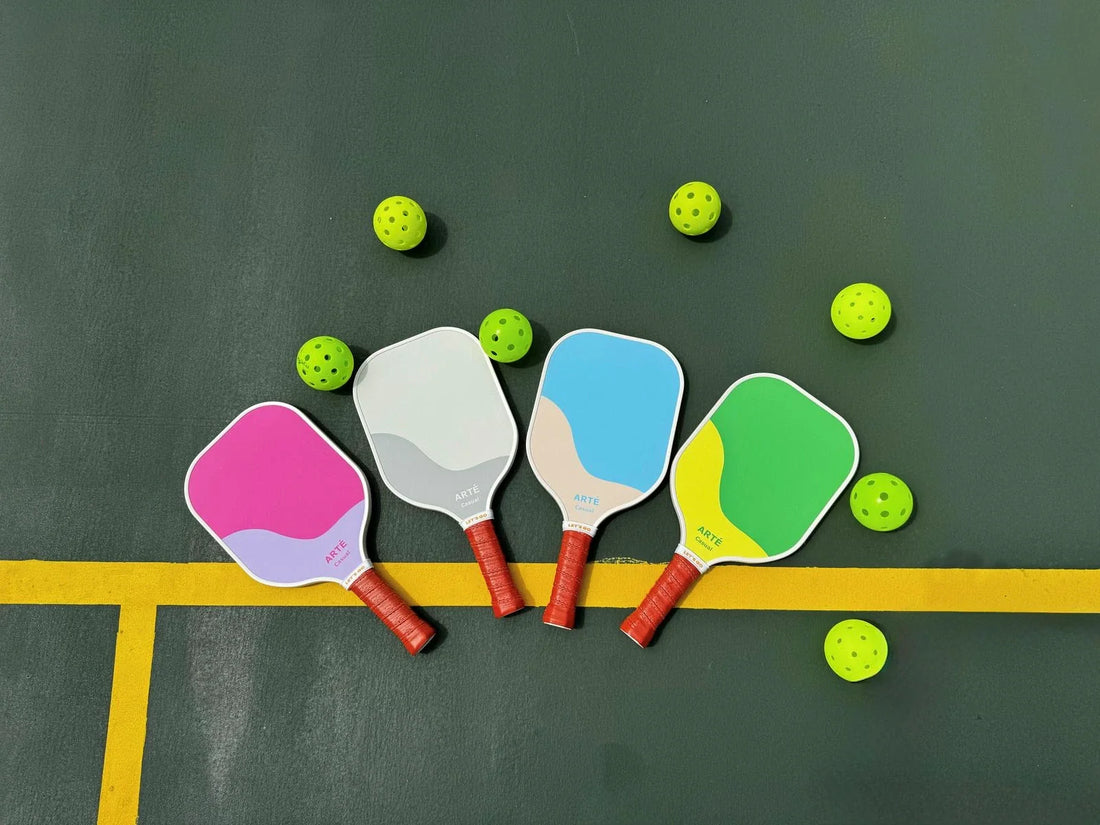
Padel Ball vs. pickleball: 4 Differences you need to know
In the world of paddle sports, both padel ball and pickleball have gained immense popularity. While they may seem similar at first glance, these two games have distinct differences that set them apart. In this article, we'll break down the key distinctions between padel ball and pickleball. Helping you decide which sport might be the perfect fit for you.
What is Padel Ball?
Padel is a racket sport played on an enclosed court, similar to tennis but smaller in size, and with walls that players can use strategically. It's typically played in doubles using solid, perforated rackets and a ball similar to tennis balls but with less pressure.
The game blends elements of tennis and squash, making it fast-paced and engaging. Scoring in padel follows the tennis system, and the objective is to hit the ball over the net into the opponent's side of the court, within bounds. The walls add a unique dimension, as the ball can rebound off them, keeping rallies dynamic.
What is pickleball?
Pickleball is a paddle sport that combines elements of tennis, badminton, and ping-pong. It is played on a smaller court than tennis, with a net slightly lower than the standard tennis net. Players use solid paddles to hit a perforated plastic ball, often resembling a wiffle ball.
The game can be played in singles or doubles formats, and the objective is to score points by hitting the ball over the net into the opponent's court while adhering to specific rules, like the double-bounce rule and avoiding the "kitchen" (non-volley zone).
Its simplicity, accessibility, and inclusive nature have made pickleball one of the fastest-growing sports, appealing to players of all ages and skill levels.
Key Differences Between Padel Ball and Pickleball
- Court Setup: Padel: Played on an enclosed court (10m x 20m) with walls that players can use during gameplay, similar to squash. Pickleball: Played on an open court (6.1m x 13.4m) without walls, resembling a smaller tennis court.
- Equipment: Padel: Uses a solid, perforated racket and a tennis-like ball with slightly reduced pressure. Pickleball: Played with a solid paddle and a perforated plastic ball resembling a wiffle ball.
- Gameplay Dynamics: Padel: Incorporates rebounds off the court walls, adding a strategic layer to gameplay. Pickleball: Focuses on precise placement, the "kitchen" (non-volley zone), and the double-bounce rule.
- Scoring System: Padel: Follows traditional tennis scoring rules (e.g., 15-30-40-Game). Pickleball: Scored up to 11 points (win by 2) with unique serving rules.
- Popularity and Community: Padel: Gaining traction in Europe and Latin America, often seen as a social doubles game. Pickleball: One of the fastest-growing sports in North America, inclusive for all ages and abilities.
Which Sport is Right for You?
Padel
- Playing Style: A mix of tennis and squash, played in a glass-enclosed court.
- Teamwork: Always played in doubles, so it's great for those who enjoy team dynamics.
- Skill Level: Easier to pick up than tennis but still requires some strategic thinking and agility.
- Vibe: Fast-paced and dynamic, with lots of exciting rallies!
Pickleball
- Playing Style: A hybrid of tennis, badminton, and ping-pong, played on a smaller court with a paddle and plastic ball.
- Accessibility: Super beginner-friendly, with simpler rules and less physical demand.
- Social Factor: Can be played as singles or doubles, often enjoyed in a more relaxed, social environment.
- Vibe: Fun, lighthearted, and great for all ages.
Why People Love Paddle Ball and Pickleball
Paddle ball and pickleball have captured the hearts of players worldwide, each offering its own unique charm:
Padel
- Exciting Gameplay: The combination of tennis and squash makes for fast-paced, thrilling rallies.
- Social Connection: Always played in doubles, it encourages teamwork and bonding with others.
- Easy to Learn: Less technical than traditional tennis, making it accessible for beginners.
- Fitness Fun: A great way to stay active while enjoying competitive play.
Pickleball
- Inclusive Sport: Suitable for all ages and skill levels, fostering a welcoming environment.
- Quick to Start: The simple rules and smaller court make it easy to pick up and play.
- Community Spirit: Often played in a relaxed and social setting, it's a great way to make new friends.
- Low Impact: Less physically demanding, it's ideal for staying active without overexertion.
Conclusion
Padel and pickleball are both fantastic sports that bring a unique blend of fun, activity, and social interaction, but they cater to slightly different preferences. Padel offers a fast-paced, team-oriented experience with strategic gameplay that combines elements of tennis and squash, making it ideal for those who enjoy dynamic rallies and teamwork. On the other hand, pickleball is known for its accessibility, inclusivity, and lighthearted nature, making it a great choice for people of all ages and skill levels who want a more relaxed yet engaging activity. Ultimately, your choice might come down to whether you're seeking the intensity of padel or the laid-back charm of pickleball. Either way, you can't go wrong!
If you are looking for an upgrade for your pickleball paddle, check out our casual paddle!
Might want to explore